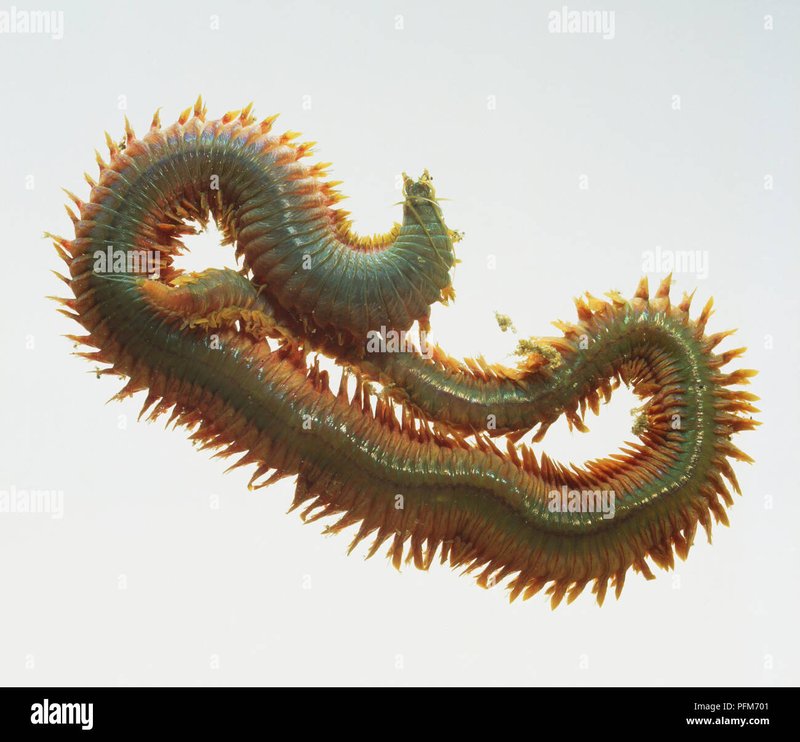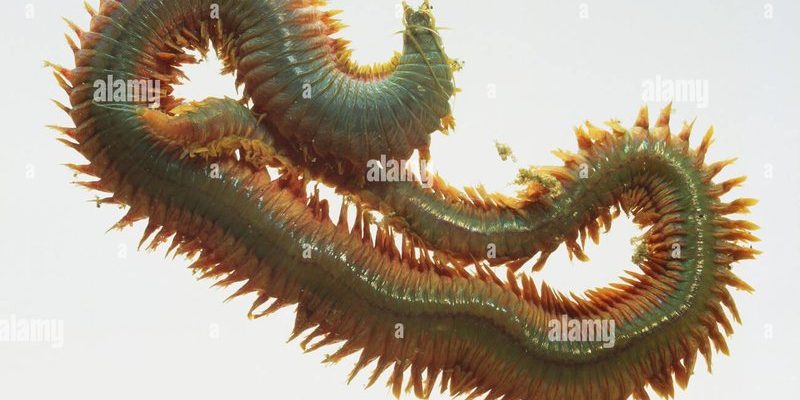
You could think of Nereis virens as the savvy scavenger of the ocean floor. Much like a chef who knows just how to prepare the most exotic dishes from a kitchen filled with surprise ingredients, this worm has developed a feeding mechanism that’s both efficient and effective. Let’s dive into the particulars of how this critter gets its food, using a step-by-step approach that’s easy to grasp—just like chatting with a friend over coffee.
What Is Nereis Virens?
Nereis virens belongs to the polychaete family, which is a group of segmented worms that inhabit marine environments. These worms can be found in coastal areas around the world, usually in soft sediments like mud or sand. They have a long, segmented body, often reaching lengths of up to 10 inches! Each segment is equipped with bristle-like structures called chaetae, which help with movement through the substrate.
These worms play a crucial role in the ocean ecosystem. They help aerate the sediment, allowing for better water flow and promoting the health of other marine organisms. Plus, they serve as a food source for various fish and birds, effectively making them an essential part of the food web. Understanding how Nereis virens feeds gives us insight into its importance and overall functionality in its habitat.
Anatomy of the Feeding Mechanism
The feeding mechanism of Nereis virens is quite complex and specialized. One of the most intriguing features is its mouth, which is equipped with a set of jaws. Think of these jaws like tiny chopsticks—able to grasp and manipulate food in a very precise manner. The mouth opens wide to capture small particles and organisms floating around in the water or buried in the seafloor.
Beyond the mouth, the worm has a well-developed pharynx that helps to draw food in. This pharynx can extend outwards, much like a vacuum cleaner hose. When Nereis virens spots a meal, it can quickly extend its pharynx to engulf the food, pulling it right into its digestive tract.
Another critical part of the anatomy is its tentacles, which aid in locating food sources. These sensory organs help the worm feel its environment, detecting chemical signals from potential meals. Picture yourself trying to find your favorite snack in the pantry using your nose; that’s what these tentacles do for the Nereis.
How Does Nereis Virens Feed?
Feeding for Nereis virens is a multi-step process that ensures it gets all the nutrients it needs. Here’s how it works, step-by-step:
1. Locating Food: Nereis virens uses its sensitive tentacles to sense nearby food sources. It can detect organic matter, small crustaceans, and other microorganisms.
2. Grabbing the Meal: Once it identifies a food source, Nereis virens contracts its body and extends its pharynx outward to reach the meal. The jaws then snap shut to secure the food.
3. Ingestion: After securing the food, the pharynx transports it into the digestive tract. This is where the magic happens—digestion and absorption of nutrients.
4. Expelling Waste: After extracting nutrients, any undigested material is expelled from the worm’s body. This waste contributes to the nutrient cycle in the sediment, enriching the environment for other organisms.
This feeding strategy is efficient, allowing Nereis virens to thrive in various habitats, from estuaries to deeper offshore environments.
What Do Nereis Virens Eat?
The diet of Nereis virens is quite varied, making it an opportunistic feeder. Here’s a breakdown of what’s typically on their menu:
- Detritus: These worms predominantly feed on organic matter and decaying plant material found in sediments.
- Microorganisms: They consume tiny marine organisms like diatoms and bacteria that are abundant in the mud.
- Small Invertebrates: If they come across small crustaceans or other worms, they won’t hesitate to add these to their diet.
- Algae: Occasionally, Nereis virens will graze on algae or other small plant material available in its habitat.
This broad diet allows the Nereis virens to adapt to different environments, ensuring it can find food regardless of the conditions.
The Role of Nereis Virens in the Ecosystem
The feeding habits of Nereis virens not only support its survival but also have significant implications for the ecosystem. Here’s why they matter:
1. Nutrient Cycling: By breaking down organic matter, Nereis virens plays a vital role in nutrient cycling. Their consumption and digestion help release nutrients back into the sediment, making them available for other organisms.
2. Aeration of Sediment: As these worms burrow through the soil, they help aerate the sediment, allowing better water flow and oxygenation. This process is essential for the health of other marine life that depends on these sediments.
3. Food Source for Others: Nereis virens serves as a food source for various predators, including fish and birds. This link is crucial for maintaining balance in the marine food web.
Understanding the feeding mechanism and overall role of Nereis virens highlights its importance in maintaining healthy marine ecosystems.
Nereis virens may be small and often overlooked, but its role in the marine ecosystem is anything but insignificant. By utilizing a unique feeding mechanism, it efficiently consumes a variety of nutrients, ensuring its survival while also contributing to the health of its environment.
From its specialized jaws to its sensitive tentacles, every part of Nereis virens is designed for effective feeding. This not only helps the worm thrive but also supports a complex web of life on the ocean floor. So, next time you think about the rich marine life below the waves, remember the hardworking ragworm and its essential feeding habits.

